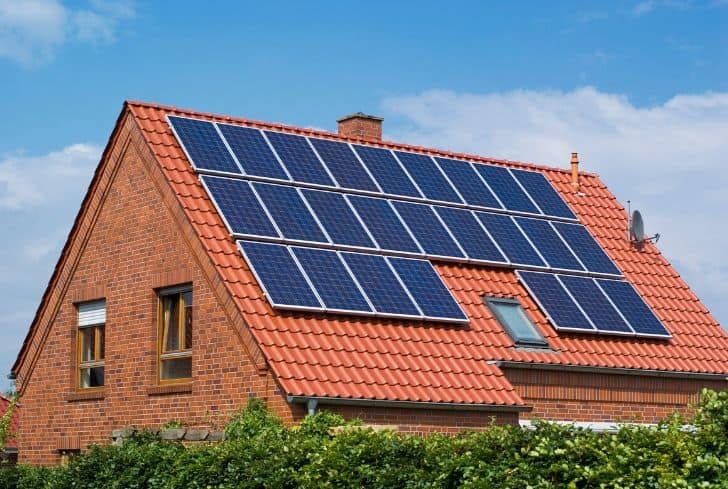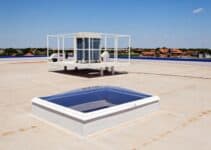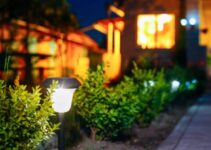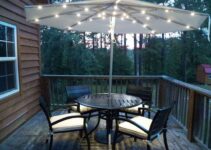The excitement of installing solar energy in your home shouldn’t cloud your consideration of long-term factors. Of course, it saves money, but at the cost of what? And can those costs be avoided?
A viable concern is leaking in the roof. Does the impact of installing the panels damage it? We’ll consider the factors that make the garage roof suitable for solar panels. Do you use a rubber roof? You’re probably wondering if you can install the panels on it instead.
Keep reading to find out.
Do Solar Panels Cause Roof Leaks?
The benefits of solar energy technology are numerous. It can help you halve your electricity bills, minimize your carbon footprints, and even make you worthy of a tax rebate on the cost of installing the panels.
Our homes are among our most significant assets, so it’s only natural to worry about the impact of installing solar panels on the roof. Well, you can install solar panels on the top, and they seldom cause any damage. But again, failure to follow the proper steps can lead to a leaky roof.
Now, to avoid damaging your roof, it’s best to get familiar with the installation process of solar panels. It starts with a racking system, then wires connecting the panels to the junction box will come next.
The electrical and mechanical hardware will also come before the solar panels. These components can easily be installed without drilling holes, but lag bolts require the technicians to make some holes in the roof.
Lag bolts are used to attach the solar panels to the roof firmly, and their shapes and depths depend on your type of roof.
These holes don’t always cause leakages because of the bolts’ plastic or metal protection. And to make things even more secure, the technicians fill the void with a sealant and use tar to cover the fixtures.
Afterward, they’ll connect the wiring and other peripherals. You won’t deal with a leaking roof when these procedures are followed well.
5 Possible Reasons For Roof Leaks
One thing property owners dread is a leaking roof. It’s an unfortunate occurrence that causes untold damage to the ceiling, insulation, and drywall. Not to talk of the structural damage, increased risk of mold or mildew, and fire hazard.
Additionally, it increases your energy costs because of the effect on the insulation system, particularly your HVAC units. They exert more energy when overworked, undoubtedly leading to higher bills.
The cause is often tricky to find, leading to an even greater headache. However, the signs are apparent – water pools on the roof frequently and in large quantities and the presence of significant tears, rips, and cracks.
There’s a leaky roof if there’s also moss, mold, lichen, or algae in your building.
Many things can cause a leaky roof, and some of them are:
1. Aging
Roofing materials also give in to wear and tear. And when they’ve been around for so long, it’s only natural for them to turn brittle and crack. This is because of the expansion and contraction that happens with changes in temperature and direct contact with the sun’s harsh rays.
It’s not uncommon for the tar on old roofs to melt with time, causing leaks.
If you’ve not replaced your roof in thirty years, your chances of a leaky roof will be significantly higher. In most cases, the wood would deteriorate and become soft.
This creates an unsuitable condition because the technician can’t drill the holes into the shingles without damaging them. And the weight of the solar panels may also be too much for an old roof.
The increased stress can only mean one thing – prepare for a leaky roof.
2. A Failed Flashing
Flashing is a slim strip of metal or plastic installed in areas of the roof that are susceptible to damage. If it’s not well done, water may seep through.
Damaged flashings are pretty expensive to replace, and temporary solutions aren’t nearly as effective as you’d think.
3. Loose or Missing Shingles
If you ever discover a shingle on your lawn, your chances of dealing with a leaky roof skyrocket. However, it can be replaced and should be done on time.
Remove the nails from the region that needs replacement and drill the new unit right in. there’ll be an apparent difference, though – the new shingle may stand out because it has barely experienced any wear and tear.
4. Roof Not Compatible With Solar Panels
Solar panels have been designed for easy installation on roofs, but some roofing materials are better suited than others. And that’s where yours may deviate and result in a leaky roof.
Your roof is less compatible if made with terracotta, slate, wood, or clay. These materials are not always sturdy enough to withstand the drilling required for the lag bolts.
However, if the roof is the most suitable place for the installation, you can consider using composite shingles for the surface allocated to solar panels. This means you’ll have to replace your weak roof, but on the upside, you won’t miss out on the benefits of solar energy.
And you shouldn’t worry about the aesthetics of your home because the solar panels will cover the replaced shingles.
5. It Wasn’t Installed Well
If your technician follows the proper procedures when installing your solar panels, you’ll have fewer chances of dealing with a leaky roof. However, if they do a hasty or inferior job, it may affect the roofing and sub roofing materials in a way that’ll cost you.
A qualified professional will focus on and avoid making costly mistakes.
Do Solar Panels Release Toxic Chemicals?
Many components are combined to help the solar system run smoothly. And metallic and glass elements are not all that make up a solar panel.
There are also toxic chemicals like cadmium and lead, but they won’t escape unless the glass breaks. And although they won’t affect you unless tampered with, solar panels will still release those chemicals into the atmosphere.
Another dangerous chemical is crystalline silicon, and its production also requires using silicon tetrachloride. This substance is deadly and kills animals and plants.
Summarily, solar panels contain highly toxic chemicals that won’t harm you while in use. However, if you break the container holding them, the gases will pollute the environment.
So, be mindful when cleaning or repairing the solar panels. If you break the glass, fix it immediately. And that’s not just because the toxic substances may escape but also because the solar cells may become less efficient when water touches them.
What Should You Do If Your Roof Leaks?
A leaky roof seldom happens when your solar panels are well installed. However, many other things may cause it, and the earlier you repair the damage, the better.
Roof repairs can be costly, but there are things you can temporarily do yourself:
2. Find The Leak
It’s not always easy to find the source of a leaky roof, but it’s often internal within the building. The water sometimes pools away from where the leak is caused, making it even more tricky to find.
In that case, it’s better to measure the area surrounding the water damage to better estimate the location.
2. Get On The Roof
You’ll do this from the interior, and it involves looking for the leak in the isolated area. The damage won’t always be apparent so you can inspect the roof membrane, flashing, or vents for the cause of the leak.
It’s a no-brainer that you need a ladder to get to the roof. And if you’re unsure about your ability to do it yourself, please invite a technician.
3. Remove The Debris
Debris, grime, and other materials may prevent you from detecting the source of the leak. So, you must clean the area surrounding the faulty section. This will make it more explicit about the problem – whether it’s age-related or merely damaged by a storm.
4. Dry The Area
A flat roof is famous for collecting water. So, you need to remove the moisture before repairing it. Otherwise, mold and mildew may damage the modifications made to the area.
And you should consider professional assistance if the leaky region is too large for you to handle independently.
5. Identify The Damage
If there are blisters on your roof, it’s probably because of a water buildup between the membrane layers. It’s also a sign of long-term sun damage.
These repairs can be costly, depending on how significant the damage is. Additionally, the repair technique will be determined by how much harm has been done. You’ll be unable to fix it yourself if it’s significant; call a technician.
6. Reduce The Damaged Area
To reduce the area that has given in to damage, you can cut through the membrane. If there’s a need for it, you can remove the layers that have given in to wear. The essence is to look out for any wet surface and replace it immediately.
7. Use Roofing Cement
After removing the membrane layers, put some roofing cement in the area. This seals the leak and provides the adhesive the membrane will adhere to. And it can be closed by pressing the flaps and cement together tightly.
8. Nail It Down
The leak will finally be sealed by attaching blister flaps to the roof. But you may make some holes in the process – fill the void with roofing cement.
What Will Damage Solar Panels?
Solar power is fast evolving, and many technologies are being combined to make it as effective, efficient, and fool-proof as possible. The solar system will serve you well, but only when you protect it accordingly.
Some of the things that will damage solar panels include falling debris like twigs, dirt and leaves. These materials cause minor scratches that may expand, contract, and worsen due to the weather.
You can prevent this by installing the panels in an area with fewer trees and coverings. And remember that the heavier the debris, the higher the chances of damage.
Hail may also spoil your solar panels. However, the structure uses tempered glass reinforced to withstand pressure. But a severe hailstorm may do untold destruction. This is often taken care of by home insurance.
Water may also damage the panels. This is because of deterioration and sealing problems. When the sealant ages, it’ll be less effective and may allow water to enter the solar cells. The best way to avoid this is by resealing the leaking area often.
Do Solar Panels Destroy Roofs?
Solar panels are made of solid glass suitable for all kinds of roofs, so this is a resounding no. Unless you’re doing something wrong, perhaps with the installation, there’s no reason your solar panels will destroy the roof.
If anything, they have the opposite effect, protecting your structure.
Conclusion
Solar technology is the future, but it must be done right if you want to enjoy the experience. Mounting them won’t cause a leak in your roof, but only when you’re conscious enough.






